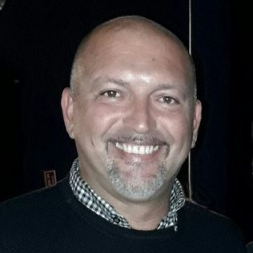New Perspectives in Sustainable Aquaculture
A special issue of Journal of Marine Science and Engineering (ISSN 2077-1312). This special issue belongs to the section "Marine Biology".
Deadline for manuscript submissions: closed (31 December 2022) | Viewed by 44765
Special Issue Editors
Interests: Porifera taxonomy and biology; biodiversity; macrobenthos; marine alien species; filter-feeder invertebrates; marine bioremediation; sponge rearing and translocation; restocking techniques
Special Issues, Collections and Topics in MDPI journals
Interests: marine alien species; structural and functional marine biodiversity; conservation biology; marine biocostructions; marine fouling; marine invertebrate rearing
Special Issues, Collections and Topics in MDPI journals
Special Issue Information
Dear Colleagues,
The recent, rapid spread of mariculture requires the development of new approaches aimed at measuring, controlling, and reducing the impact of this activity in the marine environment.
Mariculture produces high levels of waste (feces, food residues, metabolites, etc.) that could cause strong environmental imbalances with negative consequences for the surrounding environment, both in the water column and, especially, at the seabed level, harbouring soft- and hard-substrate communities.
In this context and from a circular economy perspective, the multi-trophic polyculture of fishes with organisms with extractive capabilities has considerable environmental and social potential, especially if species (invertebrates and/or algae) with potentially high commercial value are co-cultured.
The purpose of this Special Issue is to bring together contributions on biologically and ecologically oriented methodologies and approaches to measure, control, and minimize the potential impacts of marine aquaculture.
In particular, topics of interest include, but are not limited to:
- Bioremediation
- Zooremediation
- Integrated multitrophic aquaculture
- Innovative solutions for sustainable aquaculture
- Effects on aquatic communities
- New productions in aquaculture
- Dissemination and community awareness.
Prof. Dr. Caterina Longo
Dr. Cataldo Pierri
Guest Editors
Manuscript Submission Information
Manuscripts should be submitted online at www.mdpi.com by registering and logging in to this website. Once you are registered, click here to go to the submission form. Manuscripts can be submitted until the deadline. All submissions that pass pre-check are peer-reviewed. Accepted papers will be published continuously in the journal (as soon as accepted) and will be listed together on the special issue website. Research articles, review articles as well as short communications are invited. For planned papers, a title and short abstract (about 100 words) can be sent to the Editorial Office for announcement on this website.
Submitted manuscripts should not have been published previously, nor be under consideration for publication elsewhere (except conference proceedings papers). All manuscripts are thoroughly refereed through a single-blind peer-review process. A guide for authors and other relevant information for submission of manuscripts is available on the Instructions for Authors page. Journal of Marine Science and Engineering is an international peer-reviewed open access monthly journal published by MDPI.
Please visit the Instructions for Authors page before submitting a manuscript. The Article Processing Charge (APC) for publication in this open access journal is 2600 CHF (Swiss Francs). Submitted papers should be well formatted and use good English. Authors may use MDPI's English editing service prior to publication or during author revisions.
Keywords
- Sustainable aquaculture
- Bioremediation
- Zooremediation
- Integrated multitrophic aquaculture
- Filter-feeder invertebrates
- Rearing performance
- Autochthonous communities
Benefits of Publishing in a Special Issue
- Ease of navigation: Grouping papers by topic helps scholars navigate broad scope journals more efficiently.
- Greater discoverability: Special Issues support the reach and impact of scientific research. Articles in Special Issues are more discoverable and cited more frequently.
- Expansion of research network: Special Issues facilitate connections among authors, fostering scientific collaborations.
- External promotion: Articles in Special Issues are often promoted through the journal's social media, increasing their visibility.
- Reprint: MDPI Books provides the opportunity to republish successful Special Issues in book format, both online and in print.
Further information on MDPI's Special Issue policies can be found here.






